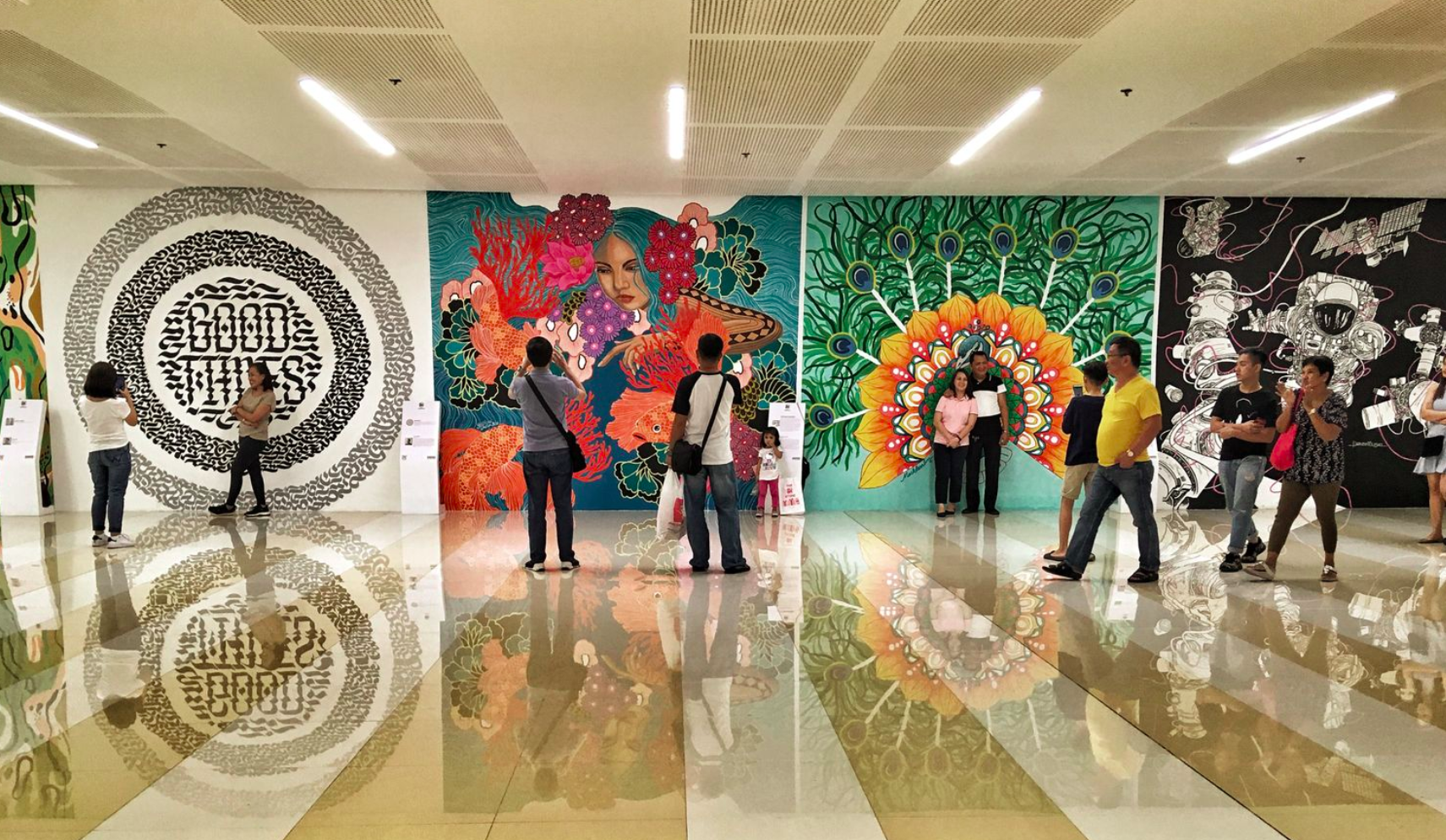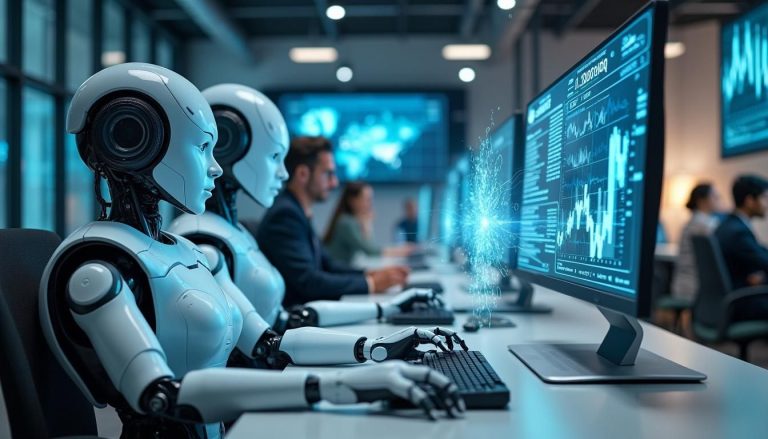
Creative Uses of AI in the Arts
The intersection of technology and creativity has always yielded fascinating results, and the advent of Artificial Intelligence (AI) in the arts is no exception. From generating new forms of visual art to composing music, AI is revolutionizing the creative landscape. This blog post explores the myriad ways AI is being used in the arts, offering insights, statistics, and actionable tips for artists and enthusiasts alike.
AI in Visual Arts
Artificial Intelligence is making significant strides in the realm of visual arts. By leveraging machine learning algorithms, artists can now create stunning pieces that push the boundaries of traditional art.
AI-Generated Art
AI-generated art has become a hot topic in the art world. Algorithms like Generative Adversarial Networks (GANs) are used to create new images based on a dataset of existing artworks. For instance, the AI program “DeepArt” can transform photographs into paintings that mimic the styles of famous artists like Van Gogh and Picasso.
According to a 2020 survey, the global market for AI art is projected to reach $1.2 billion by 2025. This growth is driven by the increasing acceptance of AI-generated art in mainstream galleries and auctions. In 2018, an AI-generated portrait sold for $432,500 at Christie’s, highlighting the potential for AI in the art market.
Enhancing Traditional Art Techniques
AI is not only creating new art forms but also enhancing traditional techniques. Applications like “RunwayML” allow artists to apply complex algorithms to their work, enabling them to experiment with textures, colors, and patterns in ways that were previously unimaginable.
For example, artist Mario Klingemann uses AI to manipulate digital images, creating surreal and thought-provoking pieces. His work has been showcased in major exhibitions, proving that AI can be a valuable tool for contemporary artists.
AI in Music Composition
AI’s influence extends beyond visual arts into the realm of music. Machine learning algorithms can analyze musical patterns and generate new compositions, offering exciting possibilities for musicians and composers.
Algorithmic Music Creation
AI algorithms like OpenAI’s “MuseNet” can compose music in various styles, from classical to jazz. MuseNet can generate four-minute musical compositions with ten different instruments, demonstrating the versatility of AI in music creation.
According to a study by Music Ally, 59% of musicians believe that AI will play a significant role in music composition in the next decade. This statistic underscores the growing recognition of AI’s potential in the music industry.
Personalized Music Recommendations
AI is also transforming how we discover and enjoy music. Streaming platforms like Spotify and Apple Music use AI algorithms to analyze listening habits and provide personalized recommendations. These algorithms consider factors like genre preferences, listening history, and even mood to curate playlists tailored to individual users.
This personalized approach has proven effective, with a 2021 survey revealing that 75% of users discover new artists through AI-generated recommendations. This statistic highlights the impact of AI on music discovery and consumption.
AI in Literature
Artificial Intelligence is making its mark on literature as well. From generating text to assisting with editing, AI is becoming an invaluable tool for writers and publishers.
AI-Generated Text
AI models like OpenAI’s “GPT-3” can generate coherent and contextually relevant text, offering new possibilities for storytelling. GPT-3 has been used to write articles, short stories, and even poetry, showcasing the creative potential of AI in literature.
For instance, the AI-written novel “1 the Road” by Ross Goodwin was generated using a neural network and various data inputs, including GPS coordinates and real-time weather information. This innovative approach demonstrates how AI can be used to create unique and engaging narratives.
Editing and Proofreading
AI-powered tools like “Grammarly” and “Hemingway” assist writers in editing and proofreading their work. These tools use machine learning algorithms to identify grammatical errors, suggest improvements, and enhance readability. By automating these tasks, AI allows writers to focus more on the creative aspects of their work.
A 2022 survey found that 68% of writers use AI-powered tools for editing and proofreading, indicating the widespread adoption of AI in the literary community. This statistic highlights the practical benefits of AI for writers and publishers.
AI in Film and Animation
Film and animation are other areas where AI is making a significant impact. From scriptwriting to visual effects, AI is revolutionizing the way films are made and experienced.
AI in Scriptwriting
AI algorithms can analyze existing scripts and generate new ones, offering fresh ideas and perspectives for filmmakers. For example, the AI program “ScriptBook” can predict the success of a script by analyzing its narrative structure, characters, and dialogue.
This technology has been used by major studios to refine scripts and enhance storytelling. According to a 2020 report, AI-assisted scriptwriting has the potential to reduce production costs by 20%, making it an attractive option for filmmakers.
Visual Effects and Animation
AI is also transforming visual effects and animation. Machine learning algorithms can generate realistic animations, enhance visual effects, and even de-age actors in films. For instance, the AI tool “DeepFake” has been used to create realistic facial animations, allowing filmmakers to bring their characters to life in new and exciting ways.
A study by Allied Market Research predicts that the global AI in the animation market will reach $2.4 billion by 2026, driven by the increasing demand for high-quality visual effects and animations. This statistic highlights the growing importance of AI in the film and animation industry.
Actionable Tips for Artists
As AI continues to shape the arts, artists can take advantage of this technology to enhance their creative process. Here are some actionable tips for incorporating AI into your artistic practice:
Experiment with AI Tools
Explore different AI tools and applications to find the ones that best suit your needs. Whether you’re a visual artist, musician, writer, or filmmaker, there are AI tools available to enhance your creative process. For example, visual artists can use “DeepArt” to transform their photographs into paintings, while musicians can use “MuseNet” to generate new compositions.
Collaborate with AI
Consider AI as a collaborator rather than a replacement. Use AI-generated ideas as a starting point and build upon them with your unique artistic vision. This collaborative approach can lead to innovative and unexpected results.
Stay Informed
Keep up-to-date with the latest developments in AI and the arts. Follow industry news, attend conferences, and join online communities to stay informed about new tools, techniques, and trends. This knowledge will help you make the most of AI’s potential in your artistic practice.
Embrace Change
Be open to experimenting with new technologies and techniques. The integration of AI in the arts is still in its early stages, and there is much to be discovered. Embrace change and be willing to explore new possibilities.
Conclusion
The creative uses of AI in the arts are vast and varied, offering exciting possibilities for artists and enthusiasts alike. From visual arts and music composition to literature and film, AI is transforming the way we create and experience art. By leveraging AI tools and techniques, artists can push the boundaries of their creativity and explore new artistic frontiers. As technology continues to evolve, the future of AI in the arts looks bright and full of potential.
Whether you’re an artist looking to enhance your creative process or an enthusiast curious about the intersection of technology and art, there has never been a more exciting time to explore the creative uses of AI in the arts.


